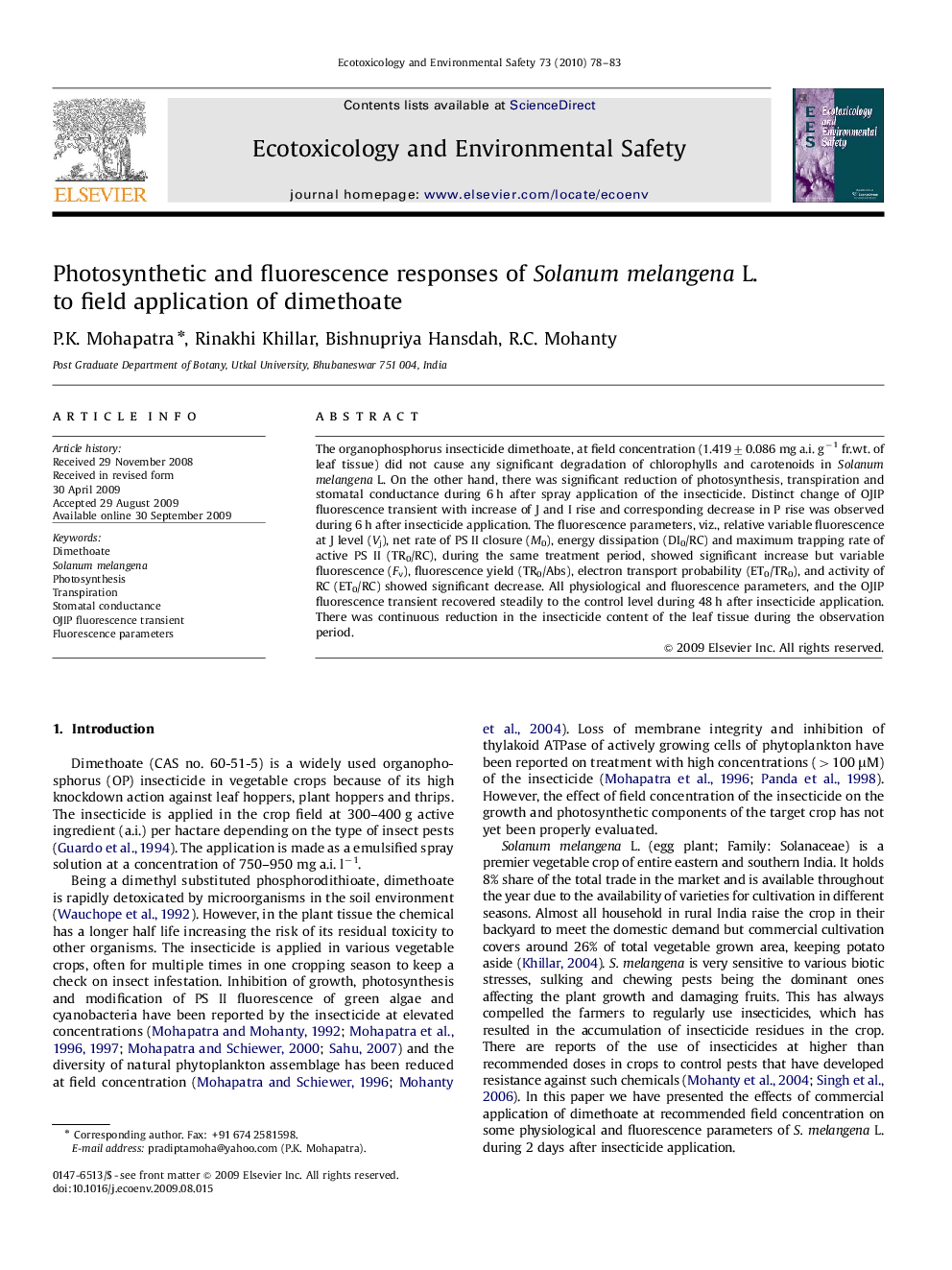| Article ID | Journal | Published Year | Pages | File Type |
|---|---|---|---|---|
| 4421900 | Ecotoxicology and Environmental Safety | 2010 | 6 Pages |
The organophosphorus insecticide dimethoate, at field concentration (1.419±0.086 mg a.i. g−1 fr.wt. of leaf tissue) did not cause any significant degradation of chlorophylls and carotenoids in Solanum melangena L. On the other hand, there was significant reduction of photosynthesis, transpiration and stomatal conductance during 6 h after spray application of the insecticide. Distinct change of OJIP fluorescence transient with increase of J and I rise and corresponding decrease in P rise was observed during 6 h after insecticide application. The fluorescence parameters, viz., relative variable fluorescence at J level (Vj), net rate of PS II closure (M0), energy dissipation (DI0/RC) and maximum trapping rate of active PS II (TR0/RC), during the same treatment period, showed significant increase but variable fluorescence (Fv), fluorescence yield (TR0/Abs), electron transport probability (ET0/TR0), and activity of RC (ET0/RC) showed significant decrease. All physiological and fluorescence parameters, and the OJIP fluorescence transient recovered steadily to the control level during 48 h after insecticide application. There was continuous reduction in the insecticide content of the leaf tissue during the observation period.
